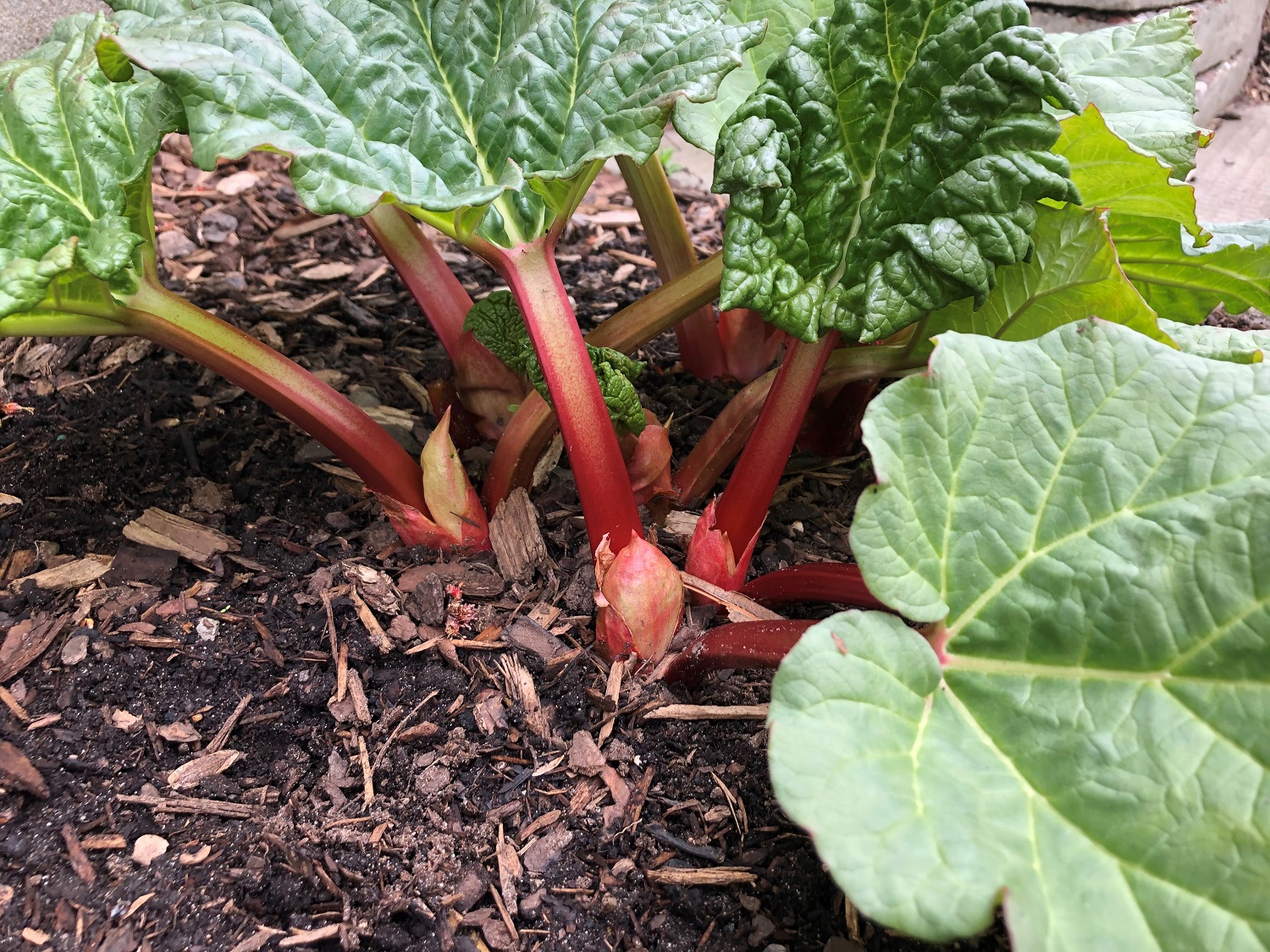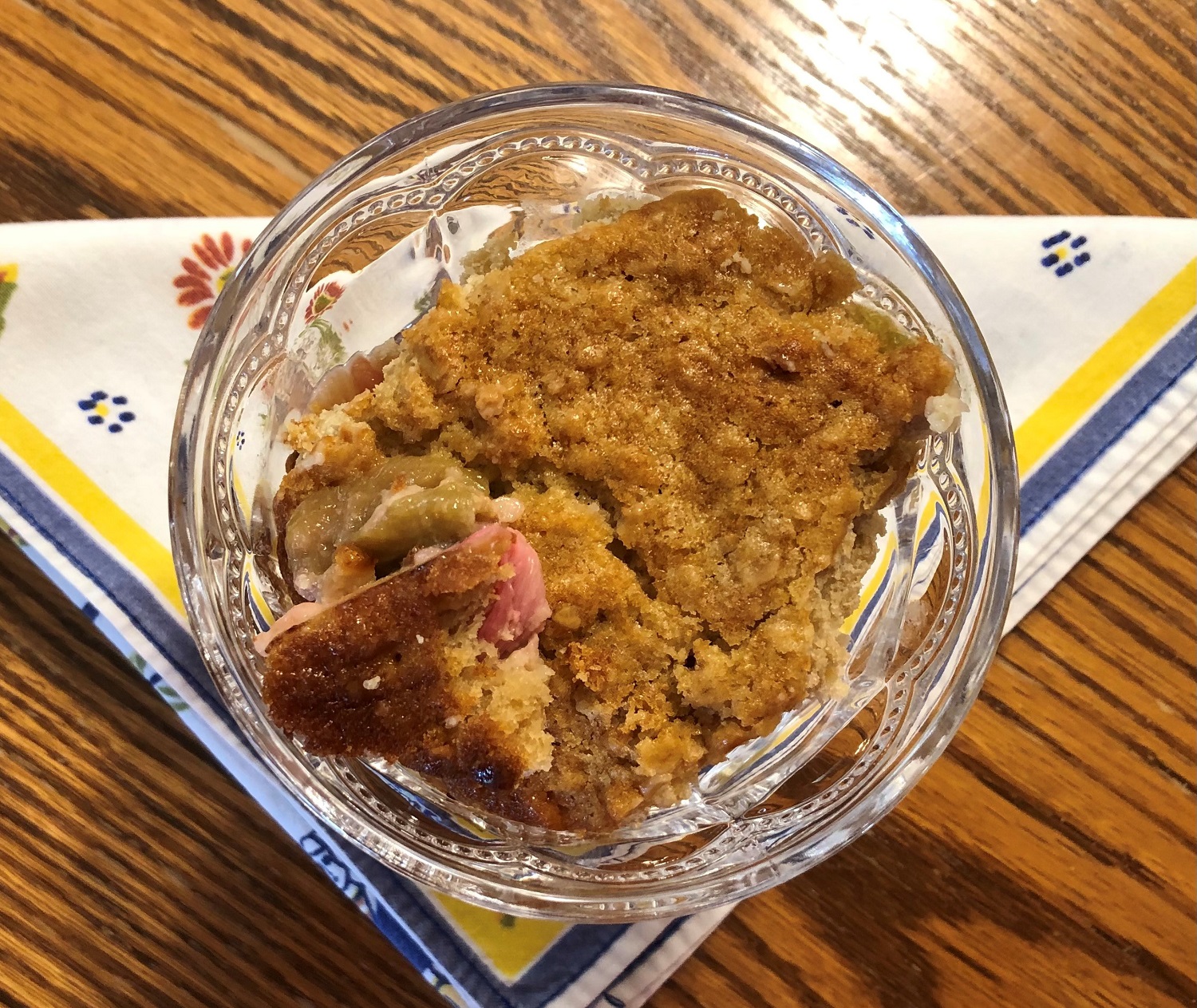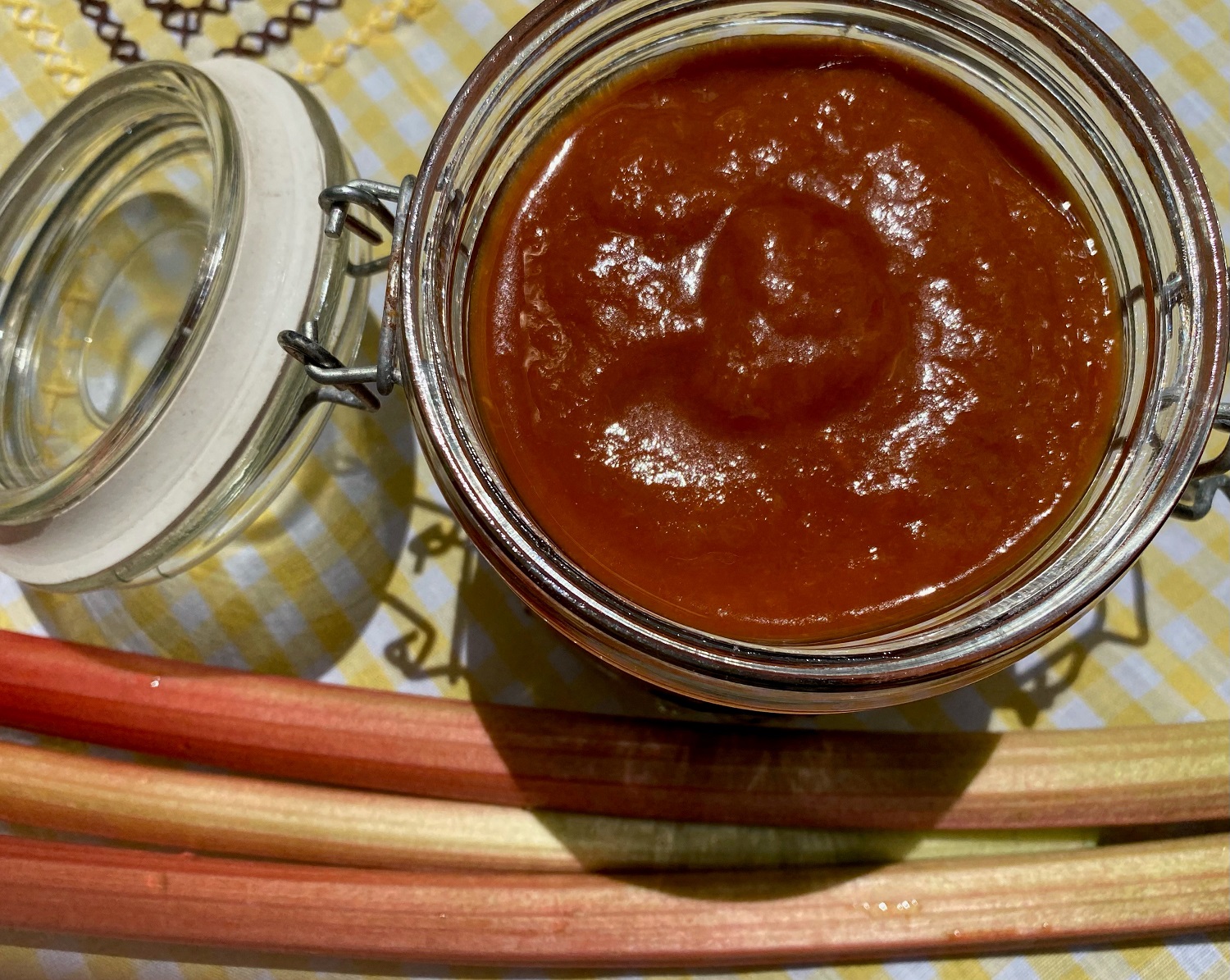In the Garden
By Nancy McDonald
The glorious spring vegetable

Many of us take joy in harbingers of spring: first robin, buds swelling, early shoots and blooms appearing. For me, spring is truly here when I see those pink-toned rhubarb stalks. Before the end of April, I clean out my freezer so I will have room to freeze any extra rhubarb for winter use. I am transported back home to PEI with memories of my father often making lunch with mom’s home-baked bread, fresh stewed rhubarb and a slice of local Amalgamated Dairy Limited cheddar cheese. To me, rhubarb is a glorious vegetable deserving space in any garden.
Rhubarb (Rheum rhabarbarum) is a member of the buckwheat family and in our kitchens, it is most often prepared in dessert recipes. This herbaceous perennial is native to Central Asia where 5,000 years ago, its root was used for medicinal purposes. By 1829 rhubarb appeared in American seed catalogues and was dubbed the “pie plant” by many.
Rhubarb is a cool-season perennial that is relatively resistant to pests. It grows from fleshy roots (rhizomes), producing large, edible petioles (stalks). A mature plant can be 60-90 cm tall and wide. While both the stalks and leaves contain oxalic acid, the amount in the leaves is much higher and could be toxic, so the leaves are not eaten. The leaves can be safely added to home compost piles or placed at the base of the plant to act as mulch.
Rhubarb is a long-lived perennial but resist harvesting the stalks until its second year to allow the roots to establish. It can be grown from seed and organic seed is found at local garden centres but
realize you will be adding additional time before your first harvest. If you only want one or two plants, then a crown or plant division is the way to go. Many of us are fortunate to have friends with a rhubarb patch from which they will share. My rhubarb came from three wonderful friends. In the spring you will find crowns for sale at garden centres or shipped in a dormant form from online sources. Local garden sales often have rhubarb divisions for sale but be there early as they sell quickly.

Rhubarb is best planted in the spring or fall. Choose a full sun or semishade location with rich, lightly moist soil conditions. Soggy soil can lead to root rot. Plant the crowns no deeper than five centimentres. Water well after planting and be attentive to watering the first season. I add compost, working it in gently after planting. Rhubarb is a heavy feeder and benefits from a yearly application of compost or aged manure. I add fall leaves to my rhubarb utilizing this free organic matter. Mulching around the rhubarb keeps the ground consistently moist and aids weed
control. If your rhubarb stalks are spindly, it may be a sign of too little available nutrition, moisture or sun.
Give your plant space to grow, allowing 90 centimetres between plants and avoid planting where it is competing with shrub or tree roots. Choose a permanent location for your rhubarb, somewhere it can grow without disturbance year after year. That is why it makes sense to plant rhubarb in a perennial bed or in its own dedicated bed rather than a vegetable garden where
digging occurs annually.

Stalks are ready for harvest when 25 to 40 centimetres in length. I pull two-thirds of the developed stalks when harvesting. Leaving one-third of the foliage ensures that the plant will continue to grow and produce during the summer. And note, I pull rather than cut. Support the base of the plant, go to the attached end and with a slight twist and pull, it is easily removed. Pulling rather than cutting allows the plant to recover more quickly but also cut nubs of stalks are a place for water to collect which may contribute to crown rot. In my garden, I harvest stalks periodically over eight to 10 weeks. I have always removed flower stalks as they appear, but they certainly can look dramatic in the garden and if you have a well established plant, they will do no harm to your yield. Just remove the stalk when it starts producing seeds. After several years of growth your plant may slow down in production. This is an opportune time to rejuvenate your rhubarb by dividing.
Rhubarb’s unique flavour makes it a favourite ingredient in pies and desserts. It is high in vitamins A, C and K, thiamin, riboflavin, niacin, calcium, potassium, phosphorous, and dietary fibre. However, with many of us trying to reduce the amount of sugar required to overcome its tart taste, we may be avoiding cooking with this nutrient-rich vegetable. I grow sweet cicely (Myrrhis odorata) in my garden, an early perennial herb often called the ‘sugar herb’. It has an anise flavour that disappears with the heat of cooking, and I add finely chopped leaves to stewing rhubarb and to crumbles to reduce the amount of sugar needed. Other ideas to reduce sugar is to use rhubarb in combination with sweet fruits such as strawberries or to use 100 per cent fruit juice as the cooking, liquid. Roasting rhubarb with just a sprinkle of sugar is another way to reduce tartness. A favourite recipe idea spot for me is Foodland Ontario for all Ontario food products. Check it out and you will find sweet and savoury recipe ideas for rhubarb. ontario.ca/foodland/recipes
I learned when researching for this article that the colour of the stalk is not an indicator of tartness. Some popular varieties are Rheum ‘Canada Red,’ ‘Victoria’ (stalks are red at the base, green at the top) and ‘Valentine’ with dark red stalks which stay red in the cooking process. I may just have to search for ‘Valentine’! I hope you are growing or will consider growing rhubarb. According to the National Day calendar, June 9th is national strawberry rhubarb pie day. Perhaps we should all bake a pie or a favourite family recipe such as my mother’s rhubarb batter pudding to collectively honour rhubarb that day.
Florence’s Rhubarb Batter Pudding
Cream together:
⅓ cup butter
½ cup brown sugar
Add:
1 beaten egg
½ cup flour
2 tsp. baking powder
½ tsp. salt
Dash of vanilla
½ cup milk
Put diced rhubarb on the bottom of a buttered casserole. Sprinkle with sugar. Cover with topping and bake at 375° F for 40 minutes. This recipe was often doubled when extra workers were helping on the family farm.
Nancy McDonald is a retired nurse who joined the Master Gardeners of Ottawa-Carleton to both volunteer and learn in retirement. She has a special interest in growing and using edible perennials and herbs.






